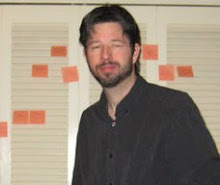Disclaimer: This post is not for the old-timers; you already know its insights. And this post is not for the newcomers, as one must learn discipline before one can let go of it.
I just read Wendy Richmond's article on Commarts.com, “
Permission to Loiter,” and connected with it immediately.
She describes how the most meaningful projects arise from being in a place of loitering and idleness. She talks about how she now resists that urge to be productive, but rather lets it arise organically. These words particularly resonated with me:
I want to go against the obvious urge of being productive and instead wait to see, out of the infinite number of possible directions, where my thoughts choose to linger.
I've had a theory around boredom for some time now that converges with Richmond's thoughts nicely. For an active mind in today's information age, it's actually rather difficult to find boredom. Nearly impossible, if one does not actively cultivate it. RSS feeds, DVRs and the steady flow of all forms of entertainment (video games, movies, music, etc.) all mean that we never have to be bored again. And that to me is rather tragic.
We've all seen the deluge of diatribes against the excess flow of information, which tend to focus on the inability of individuals to process the information effectively, responsibly. But my fear is that we become too much the consumer and too little the producer. Even the majority of what's being produced is repackaging old information. (Consider the nostalgia trend in moviemaking. Did we really need a remake of The Dukes of Hazzard.)
But I believe boredom is what triggers the creative mind (where there is one). When the conscious mind is idle, the subconscious mind gets to work. And after a reasonable time, makes itself known to the conscious time. “Say, conscious mind, you've been shelling peanuts for the past hour. I'll bet you could build an automatic peanut sheller. And here's how.”
Now, I'm not advocating that we all wander around aimlessly for half our lives, waiting for inspiration to strike us rich. But set aside some time each week to do nothing. You might be surprised at just how productive doing nothing can be.




